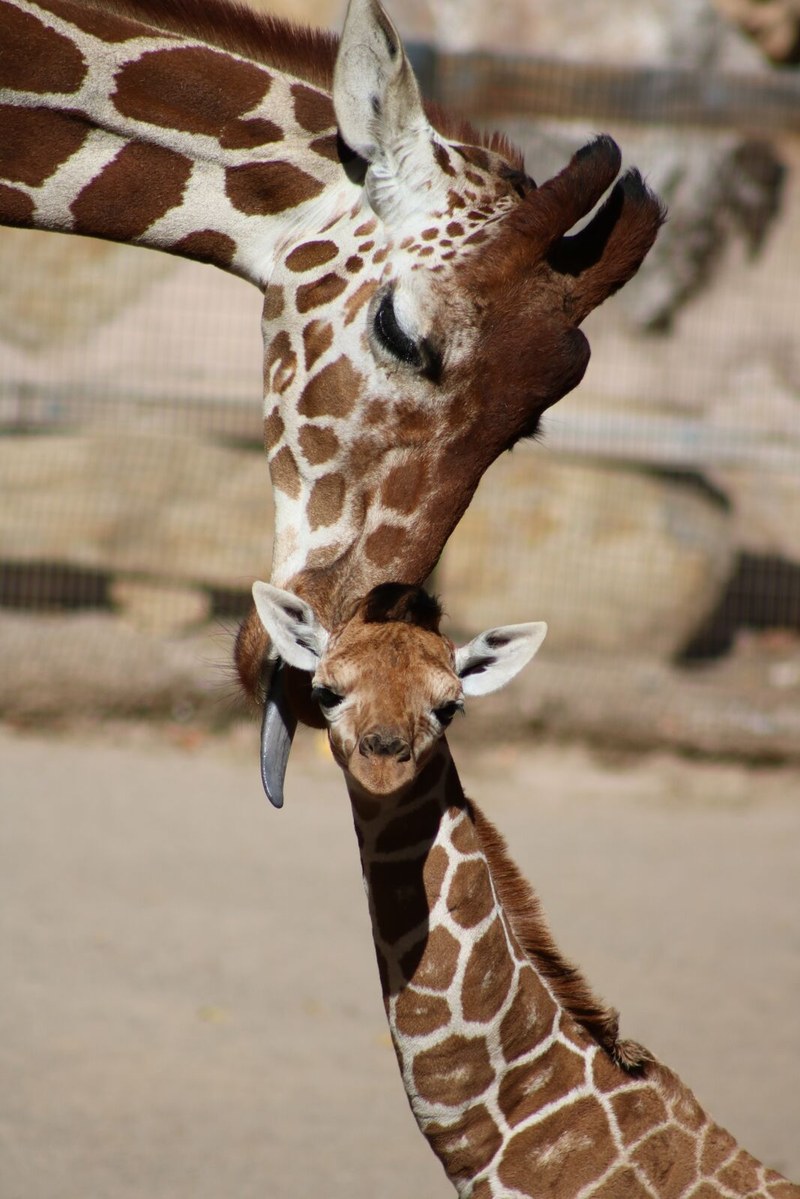
Animal Wellbeing is Our Number One Priority
ABQ BioPark prioritizes mental and physical health when caring for animals.
Oct. 3, 2018 - Ever wonder what’s going on when you can’t find your favorite animal on exhibit? Several different things could be happening, and they all revolve around animal welfare.
“We deeply wish that our guests are able to see every animal on every visit, and when that is not the case we hope that they can understand that our first priority must be the animals in our care,” said Erin Flynn, ABQ BioPark Mammal Curator.
The ABQ BioPark is passionate about protecting wildlife and wild places. Zoo guests play an important role in this as they form connections with our animals when watching and interacting with them on their visit. "We hope that this leads to respect and caring for our animals and help our visitors realize that their daily actions and choices matter to our animals’ wild relatives and the habitat that they depend on,” said Flynn. “While this is a major reason that we do what we do, it is also vitally important that we provide the best possible lives and experiences for the animals in our care.”
She added, “As their caretakers, it is important that we ensure their health through all stages of life, give them choices and control (as we would all want for ourselves), and ensure that they have dynamic and engaging habitats to live in.”
The ABQ BioPark’s animals can choose what they’d like to do and where they’d like to be—to come into their outdoor exhibit, go inside or take a break behind a visual barrier such a rocky outcropping, log, or secret nook on exhibit, or even travel between exhibits. For instance, the ABQ BioPark’s new snow leopard mom and cub are growing more confident exploring their exhibit. During this process, it is important that the two are in control of their environment and are able to travel between their outside exhibit and inside holding as they please.
Choice is also an important part of our training and enrichment programs at the BioPark. Animal care staff offer the animals opportunities to train with them as they learn and practice behaviors that help the animals participate in their own care (such as voluntarily accepting injections or letting keepers brush their teeth). These methods also deepen the relationship and trust between animals and their keepers. Animals are allowed to express that they are not interested in participating in a training session, and these requests are respected by the staff. With the hope of engaging the animals and inspiring natural behaviors, the staff works hard to create enticing and safe enrichment for the animals to choose to interact with, or not.
According to Flynn, giving animals these kinds of choices is as important as offering food, water and shelter. “It’s not just physical health that is important—it’s mental health as well,” she said.
That said, ABQ BioPark staff does its best to ensure that visitors can see their favorite animals when they visit. Some reasons they may not be visible on a particular day include weather, renovations, medical treatment, or respecting the animals’ choice when they communicate that they would like some privacy.
“Please know that we care deeply about your experience, as well as the lives of our animals,” Flynn said. “We pledge to our guests to do our best to communicate when some of our animals are not available to visit on a particular day. Thank you for your continued support and helping us make a difference.”
Not Seeing Your Favorite Animal? Here Are Some Viewing Tips:
- Almost all of the animals are most active in the morning and right before closing. During the heat of the day, many like to nap.
- Most animals remain in their outside exhibit for the majority of the day. If you don’t see them, they are often taking a break or nap behind a rocky outcrop, log, or in a shady spot on exhibit. Check back again before you leave and see if naptime is over. Some animals also have fantastic camouflage and may be ‘hiding in plain sight’.
- In the winter, many animals will not come outside until the temperature reaches 45 degrees (that’s generally around 10-11 a.m.).
- Exhibits include shade, pools, and mud wallows to meet the needs of each species. In the summer, exhibits and holdings are supplemented with fans and misters, and animals receive icy treats. Look for animals near these items. If you don’t see your favorite animals right away, check out the reptile house, crocodile and amphibian buildings, which are always open with dozens of species to visit.
